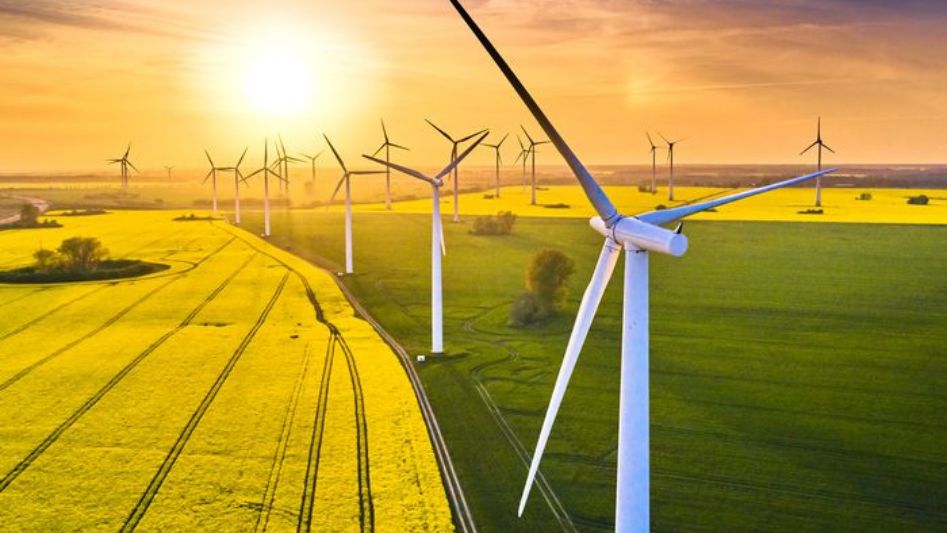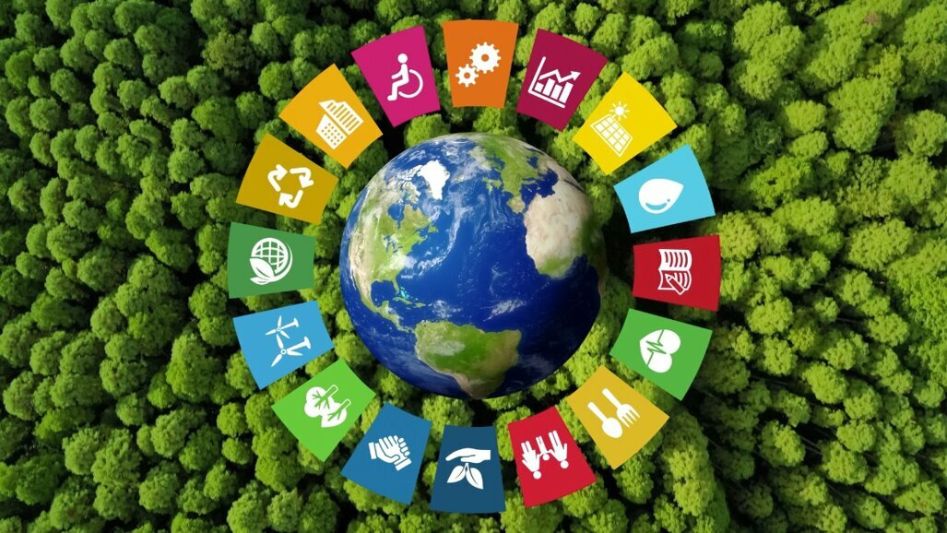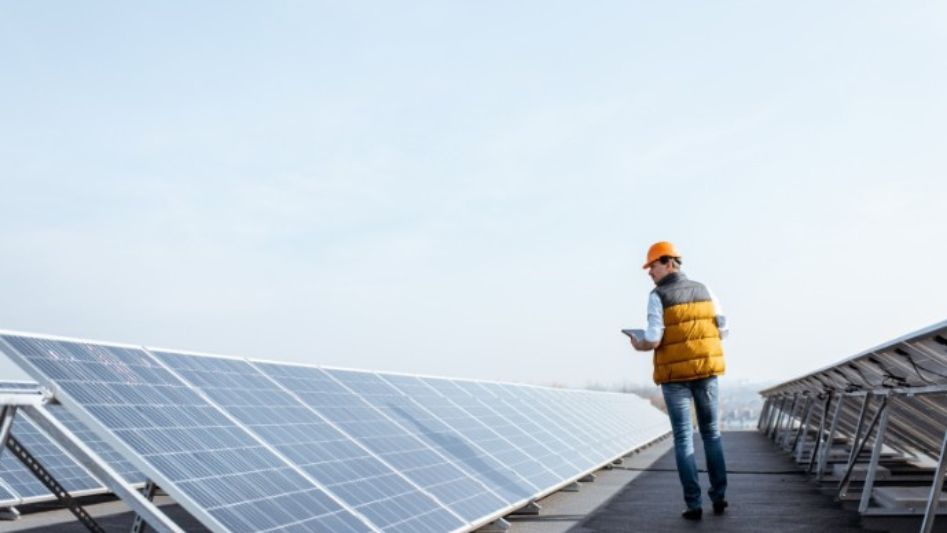Green energy can play a crucial role in achieving sustainable development goals by reducing carbon emissions, promoting clean energy sources, and improving access to energy for all.
Table of Contents
Introduction
The world is facing multiple challenges such as climate change, poverty, and inequality, among others. The United Nations has developed Sustainable Development Goals (SDGs) as a blueprint to achieve a better and more sustainable future for all. Green energy, which includes renewable energy sources such as solar, wind, hydro, and geothermal power, can play a vital role in achieving these goals.

Sustainable Development Goals (SDGs)
Sustainable Development Goals (SDGs) are a set of 17 goals and 169 targets that were adopted by the United Nations General Assembly in 2015 as a universal call to action to end poverty, protect the planet and ensure that all people enjoy peace and prosperity by 2030. The SDGs aim to address some of the most pressing global challenges of our time, including poverty, inequality, climate change, and environmental degradation. The goals are interconnected and integrated, and they cover a wide range of issues such as education, health, water and sanitation, energy, economic growth, sustainable cities and communities, and responsible consumption and production. The SDGs represent a comprehensive and ambitious framework for sustainable development that requires collective action and partnership among governments, civil society, private sector, and other stakeholders.
Green Energy Solutions
Green Energy Solutions refer to the various technologies and practices that utilize renewable energy sources such as solar, wind, hydro, geothermal, and biomass to meet energy needs while reducing greenhouse gas emissions and environmental impacts. Some examples of green energy solutions include:
Solar power – installation of solar panels to generate electricity from the sun
Wind power – use of wind turbines to convert wind energy into electricity
Hydro power – use of flowing water to generate electricity
Geothermal power – tapping into the earth’s heat to generate electricity
Bioenergy – use of organic matter, such as crops or waste, to produce energy
Energy efficiency – reducing energy consumption through energy-efficient buildings, appliances, and transportation.
Challenges and Barriers
High initial costs – many green energy technologies require significant upfront investment, which can be a barrier for individuals, businesses, and governments.
Intermittency – some renewable energy sources such as wind and solar power are intermittent, meaning that they only generate power when the wind is blowing or the sun is shining. This can be a challenge for maintaining a stable energy supply.
Energy storage – to address the intermittency challenge, energy storage technologies such as batteries are needed to store excess energy for use when the renewable energy source is not available. However, energy storage technologies can be expensive and have limited capacity.
Infrastructure limitations – in some areas, the existing infrastructure may not support the installation and use of green energy solutions.
Policy and regulatory barriers – lack of supportive policies, incentives, and regulations can be a significant barrier to the adoption of green energy solutions.
Public perception and awareness – there may be a lack of public awareness and understanding of the benefits and potential of green energy solutions, which can limit their adoption and implementation.

Benefits of Green Energy in Achieving SDGs
Green energy can play a significant role in achieving the SDGs in several ways:
Climate Action: Green energy helps reduce carbon emissions, which is crucial in mitigating the effects of climate change. By transitioning to renewable energy sources, countries can significantly reduce their carbon footprint and contribute to achieving the SDG on Climate Action.
Affordable and Clean Energy: Green energy can provide affordable and clean energy to communities, especially in developing countries. This can help achieve the SDG on Affordable and Clean Energy, which aims to increase access to modern energy services.
Job Creation: The green energy sector is a growing industry that can create new job opportunities, especially in rural areas. This can help achieve the SDG on Decent Work and Economic Growth.
Improved Health: The use of green energy can improve public health by reducing air pollution and other health hazards associated with traditional energy sources. This can help achieve the SDG on Good Health and Well-being.
Sustainable Cities and Communities: Green energy can contribute to creating sustainable cities and communities by reducing the carbon footprint of urban areas and promoting sustainable transportation. This can help achieve the SDG on Sustainable Cities and Communities.
Education and Awareness: The transition to green energy requires education and awareness-raising campaigns to promote sustainable energy use. This can help achieve the SDG on Quality Education.

Conclusion
Green energy solutions have the potential to significantly contribute to the achievement of the Sustainable Development Goals. However, there are still many challenges and barriers that need to be addressed to fully realize this potential. Governments, businesses, and individuals all have a role to play in promoting and adopting green energy solutions. By working together, we can create a more sustainable and equitable future for all.
FAQ
What are sustainable development goals (SDGs)?
Sustainable Development Goals (SDGs) are a set of 17 goals adopted by the United Nations in 2015 to address global challenges, including poverty, inequality, climate change, and environmental degradation.
How can green energy contribute to achieving sustainable development goals?
Green energy solutions, such as solar power, wind power, hydro power, geothermal power, and biomass energy, can contribute to achieving sustainable development goals by reducing carbon emissions, increasing access to energy, and promoting economic growth.
What are some of the challenges and barriers to implementing green energy solutions?
Some of the challenges and barriers include high upfront costs, lack of infrastructure and grid connection in remote areas, and lack of political will and policy support.
What are the benefits of green energy in achieving sustainable development goals?
Green energy can have a positive impact on the environment, provide economic benefits, increase access to energy for communities, and reduce reliance on non-renewable energy sources.
You May Also Like
- HOW GEOTHERMAL ENERGY CAN REVOLUTIONIZE SUSTAINABLE POWER GENERATION
- GREEN AMMONIA VS GREEN HYDROGEN: WHICH IS THE BETTER SUSTAINABLE ENERGY SOLUTION?
- THE POWER OF THE OCEAN: HARNESSING WAVE ENERGY FOR A SUSTAINABLE FUTURE
- NEW SUSTAINABLE AVIATION FUEL HUB TO BE LAUNCHED
- WHY HYDROGEN IS THE FUTURE OF SUSTAINABLE ENERGY
